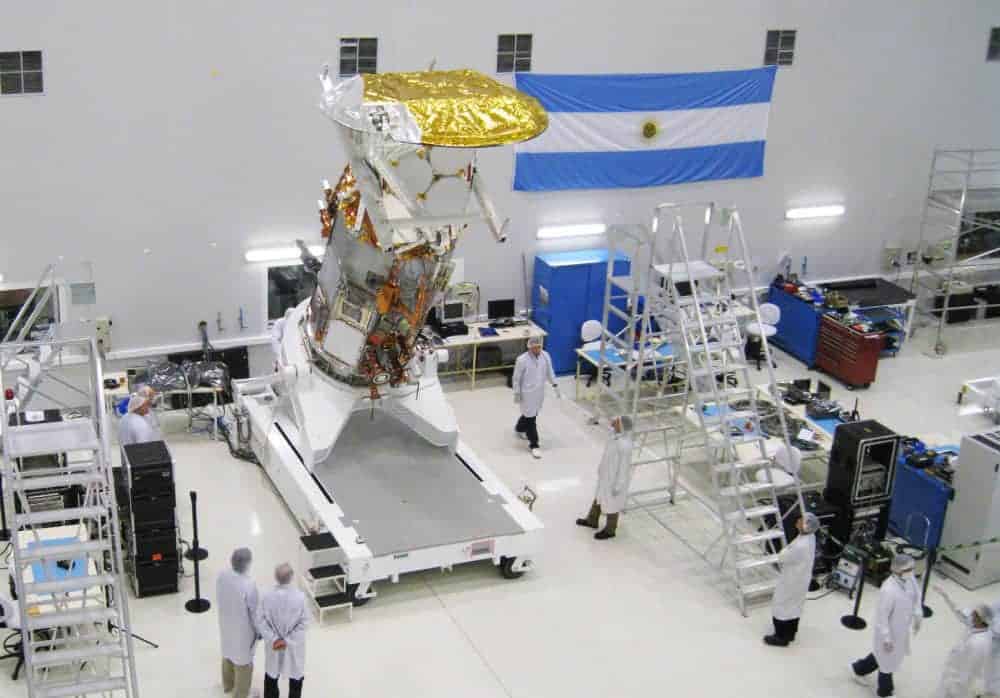SGAC Argentina
National Points of Contact Argentina
Bienvenidos! Welcome to the website of SGAC-Argentina! Here you will find information about the space activities of Argentina, which has a long tradition and recently is becoming one of the most important space industries of Latin America. Argentina’s first activities in the space field go back to 1961, when the National Commission for Space Research (Comisión Nacional de Investigaciones Espaciales, CNIE) was first established within the Argentine Air Forces area. CNIE, working with local and international partners, carried out the first southern hemisphere scientific atmospheric physics using rockets and stratospheric balloons. Together with the Argentine Institute of Aeronautics and Space Research, CNIE designed and constructed a family of one- and two-stage sounding rockets, i.e. the Orion, the Rigel and the Castor, which were launched from Chamical, in the Province of La Rioja.
Additionally, and encouraged by the strategic component the space technology had in the context of Cold War, between the decade of 1970 and the end of the 1980s, Argentina counted on extensive resources for research in the aerospace field, which enabled it to initiate various projects, such as the development of Condor missile, a solid-propellant sounding rocket, initially without military purposes. However, the development of a solid rocket propulsion system arose the suspicion related to the possible “dual use” of the technology, thus modifying the argentine rocket research direction from scientifically towards military purposes. Regarding this suspicion, it isn´t known if the development of the Cóndor Missile was either the product of a carefully conceived plan, or an impetuous military reaction to the defeat suffered against the U.K. due to the Malvinas Islands war taken place in 1982. The suspicious around the Cóndor Project, along with the new international scenario at the beginning of the 1990s, where the space technology with supposed military objectives was severely controlled by EEUU and the international community, produced the end of the development of the Cóndor rocket, and the deactivation of the CNIE. Then, in 1991, the Argentine Government decreed the creation of the National Commission for Space Activities (CONAE) as a civil entity reporting directly to the President. From 1996 to 2012, this specialized agency accomplishes its mission governed by the Ministry of Foreign Affairs. Nowadays, CONAE is under the orbit of the Ministry of Science, Technology and Innovation. CONAE drafted a National Space Plan for the use and exploitation of space science and technology with peaceful purposes, which include various courses of action in different fields such as ground infrastructure, satellite systems, information systems, access to space, institutional development and basic tasks. It is important to emphasize that the National Space Plan executed by CONAE don´t consider the argentine Geostationary Plan (Build and Launch of GeoSats) that is being carried out since 2006 by the State-owned telecommunications company, ARSAT. The progress in the space field has continued through to today with the development of new satellite technologies within the government, universities and private sector, reinforcing that Argentina is indeed an actor in the international space community. Therefore, it’s important to bring new players, young and dedicated individuals to collaborate and develop new ties with the international community to participate and bring space closer to us. For those interested in the history of Argentina’s space activities, Pablo de León (a former Argentina’s SGAC NPOC) has released his book titled “Historia de la Actividad Espacial en la Argentina” which covers space activities until the year 1980. The book can be purchased from here. The Argentinean Space Agency (CONAE) and several other private organizations such as the AATE, INVAP, ARSAT, CEATSA are always interested in new projects and pushing forward the limits of space science and technology. Young professionals and students are key participants in the future of Argentina’s Space Programme and the objective of SGAC is to bring them together to create a solid foundation for the development and exploration of space. Satellite Launches – Argentina has launched a number of satellites since the past two decades:
Country-Specific Events in 2017
Future Events:
1st IAA Latin American Symposium on Small Satellites: Advanced Technologies and Distributed Systems: The event pretends to be a forum for scientists, engineers, managers and students, so that they can exchange information about small satellites. Topics will cover the technological state of the art and the planned and on-going programs and missions. It will have a worldwide vision, but focused on the needs and developments of Latin America, and it is open to a general view but with emphasis on advanced technologies and distributed platforms and payloads. IX Argentinean Congress for Space Technology 2017, Córdoba city (26 to 28 April 2017)
Interesting Web Links for the Young Generation in Argentina
Groups, Institutions
Argentina Space Agency Argentina Space Technology Association El Leoncito Observatory Complex Theoretical and Experimental Astronomy Institute Space Physics and Astronomy Institute INVAP National Library of Aeronautics Argentina Astronomy Association Aeroespacio Magazine ARSAT Pierre Auger Observatory QUBIC Project (Experimental Cosmology) Argentine Radio Astronomy Institute Latam Satelital Space News Agency
Studies
National University of La Plata Astronomy National University of La Plata Aeronautics National University of Comahue Space Group National Technological University of Haedo Aerospace Technology Group National Aeronautics Institute Mario Gulich Institute National University of San Martín Aerospace Engineering Degree Colomb Space Institute






